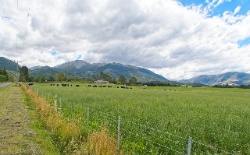John Paine - Global View November 2008
NOVEMBER 2008 NEWSLETTER
Putting out Fires with Gasoline?
Ya wouldn’t believe what
I’ve been through
You’ve been so long
Well it’s
been so long
And I’ve been putting out fires with
gasoline - David Bowie 1982
Yes - there have been a lot of fires in the global financial markets. And it’s yet to be determined whether the world’s central banks and governments have been using water or gasoline.
The conventional approach in times the economy is contracting has been for the Central Banks to reduce interest rates. In the last month -
- The U.S. Federal Reserve cut the Fed
Funds rate by 0.5% to 1%
- The People’s Bank of China
cut interest rates for the 3rd time in six weeks, dropping
the official one year deposit rate to 3.6%
- The Reserve
Bank of Australia cut it’s cash rate by 0.75% to 5.25% -
the lowest level since December 2003
- The Bank of
England cut its key interest rate by 1.5% to 3.0% - its
lowest point since 1954
- The European Central Bank
reduced rates to 3.25%
- The Bank of Japan cut its key
interest rate for the first time in seven years to 0.3% -
the lowest amongst the major economies.
- The Reserve
Bank of India reduced its overnight lending rate from 9% to
8%
- The Bank of Canada lowered its benchmark lending
rate to 2.25% from 3%
- Sweden’s Rikspank cut the repo
rate by 0.5% for the second time in two weeks to 3.7%
-
Norway’s Norges Ban cut rates by 0.5% to 1.0%
Here in New Zealand the Reserve Bank cut our Official Cash Rate by an unprecedented 1.0% to 6.5%. This is the third cut in succession. The last one before that was July 2003. For a history of the OCR since its inception in March 1999 Click here
And it’s the view of most commentators that they will drop the cash rate even more when they meet on the 4th of December.
But while interest rate reductions are helpful in stimulating an economy, the bankers and economists soon realised the world was facing an impending financial Armageddon and far more radical solutions were required. I mean if you were the Bank of Japan with your key rate at 0.3% how much lower could you go?
Then around about 10th October the world’s entire banking system was about to freeze and collapse.
We’re all pretty familiar with what’s happened since then. Banks have been bailed out by governments with packages –started by the British – which addressed the overlapping problems of too little capital, banks fearful of lending to each other, the inability to roll over corporate loans, and the risk of depositor withdrawals. Similar packages have been implemented in Australia and New Zealand.
Well now it looks like it’s worked and while the world’s banking system might still be in intensive care there are signs of recovery. Money is starting to flow through again. To quote US Federal Reserve Chairman Ben Bernanke “There are some signs that credit markets, while still quite strained, are improving… However, overall, credit conditions are still far from normal, with risk spreads remaining very elevated and banks reporting that they continued to tighten lending standards through October.”
But now after saving the financial markets the governments are faced with the fact the credit crisis had broken loose into the real economies of both industrial and emerging economies. Accordingly an economic summit meeting held last weekend in Washington, DC, was the G20 rather than the exclusive rich club of the G7.
The message from the meeting was “Over the past months our countries have taken urgent and exceptional measures to support the global economy and stabilize financial markets. These efforts must continue. At the same time, we must lay the foundation for reform to help to ensure that a global crisis, such as this one, does not happen again. Our work will be guided by a shared belief that market principles, open trade and investment regimes, and effectively regulated financial markets foster the dynamism, innovation, and entrepreneurship that are essential for economic growth, employment, and poverty reduction.” To see the full communiqué click here
All in all, it now
looks like everyone has realised that to put out the
financial fires that are raging globally, it’s now far
beyond interest rate reductions that have actually fuelled
them in the past (gasoline) - and government intervention
(which so far is proving to be the water). Globally though
the question remains – how many fire engines are there,
and how much water do they all have?
One piece of good news is China’s participation in the rescue plan. Their State Council has announced a US$586 billion plan to stimulate their domestic economy – which is good news for the rest of the world. The package includes public works, social welfare and tax reform. The important message is the government will do whatever is necessary to maintain growth at 8%. And it will do it by increasing domestic demand as its exports come under threat from the slowdown in the Western world.
The Economist has the view “Although China’s planned fiscal expansion is still vague, it promises, if it is implemented and it works, to save the economy from a hard landing. And if stronger domestic demand sucks in more imports of raw materials and infrastructure-building machinery, that is the best way China can help the rest of the world.” To read the Economist article click here
But let’s move on now as to how all these global fires are going to affect property and business in New Zealand.
Tighter credit
Probably the biggest effect will be the
result of our reliance on foreign lending to fund our
country’s savings shortfall. For years now we’ve spent
more than we’ve earned and borrowed the difference from
offshore.
Once the U.S lending markets free up again the
re-pricing of credit internationally - even with the
government guarantee - means the ability for New Zealand
banks to borrow offshore will be much tighter and more
expensive.
We’ve already seen lending for everyone
from home buyers to businesses has become much harder. And
without proven debt servicing or a clear repayment strategy
it’s become virtually impossible.
However a “benefit” of the reluctance for foreigner’s to lend to New Zealand is a lower NZ dollar. A lower currency makes imports more expensive - with luxury goods in lower demand and hopefully more saving or a move to more productive purchases – and exports more profitable. We’ve already seen this as the value of our agricultural exports have dropped less than the world wide reduction in commodity prices would suggest.
However the availability of credit here in New Zealand has become the critical issue. The failure of many of the finance companies, and the reluctance of others to lend, has wiped out the ability of many businesses and developers that relied on them to borrow money. Banks are finding it hard and more expensive to borrow offshore, and their lending criteria is tough.
On a positive note however, we’re now seeing finance companies with the government guarantee receiving deposits again from the public and starting to promote the availability of loans. A side effect of this will be to see a lowering of second-tier interest rates as the margin between bank and non-bank deposit rates contracts.
Another positive note is the co-operation we have been able to obtain between borrowers in difficulty and their lenders. In many instances a forced sale is the worst solution for both.
Cash Flow is King
The next point I’d like to address is how all of the above is going to affect the way us New Zealanders invest our money, and the way we borrow against the assets we own or want to buy.
The key to these questions is nobody’s sure any
more what anything is worth. To quote Kevin Warsh, a
governor of the U.S. Federal Reserve “We are witnessing a
fundamental reassessment of the value of every asset
everywhere in the world”.
In my view there’s been a
long overdue move from investing in assets that are believed
to be going up in value - to assets that give a return.
Investing in residential property is a classic example.
People didn’t do this because of the meagre return in the
investment, they did it because of that magic word we’ve
become used to over the last few years – capital
gain.
But now with the uncertainty of asset prices,
it’s not cash that’s king – it’s cash flow.
As lenders and individuals sell assets (especially non income earning ones like vacant land) to try and reduce debt, it will depress asset prices and the ability to refinance them which in turn will put more assets on the market and depress prices even more.
One might think this is the time to pick up property, for example, at good prices. But what are good prices? From what we’ve seen at Global Pacific, many of the projects/properties/assets that are coming on the market now, would not have got off the ground in the first place if it hadn’t been for the plentiful supply of cheap money and easy credit.
However one “asset” that is measurable is cash flow (or revenue streams). And the discounted cash flow formula (DCF) that’s most often used, to some degree takes risk into account by progressively discounting future revenue streams the further they are away.
An analogy in commercial property, for example, is that a building is worth more if it has tenants with long leases.
Talking about commercial property, I don’t see the carnage we saw in 1991 following the share market crash of 1987. This was driven by the massive oversupply of office space following a construction boom in that area. The major effect on the value of commercial property will be the lack of credit – as mentioned before – and an increase in capitalisation rates (or yields) as a result of this, and the pressure from tenants for lower rents as the economy contracts. For an excellent article on the future of commercial property see page 2 of Tony Alexander’s BNZ Weekly Overview Click here
Those of you who subscribe to my GLOBAL UPDATE will see how in these times there are numerous ways to take advantage of the move from investors seeking an increase in asset values as a means of increasing wealth, to that of investing in cash flow – or using lazy assets to do so. To read the last issue Click here
The Key
One thing that is really positive in this environment here is the change in government – and in particular the leadership of John Key.
At last we’re seeing a person realise the Key to MMP is
co-operation. It was a brilliant – and I believe genuine
–stroke by John Key to bring in the Maori Party as part of
his government. Add to that the picking of Cabinet to
include a mixture of old and new blood means, in my view, we
can look forward to three years - and hopefully more - of
co-operation rather than confrontation.
Does it matter
that we have the Green Party at one end and (yes we do need
to keep an eye on the environment) – and ACT at the other
(yes we do need fewer people in government, less RMA type
regulation restricting growth, and no PC)?
I don’t
think so.
And if you think we’ve got that on our own, see how since the recent U.S. elections the co-operation between Obama and his previous competitors, including McCain, has galvanised that country.
Cheers
JP
Global View: is an email newsletter reporting on the New Zealand Economy with a bias towards how it affects the property and business finance markets. It is a regular commentary delivered to you by email every month.
Disclaimer: Please note that all opinions and statements expressed in this email are indicative of our opinion only. Both the author and Global Pacific Corporation Limited issue no invitation to rely on the information contained in this email and intend by this statement to exclude liability for any such opinion and statement.
ENDS


 Fix & Fogg: NASA Hand-picks Kiwi Nut Butter Brand To Travel To Space In NZ First
Fix & Fogg: NASA Hand-picks Kiwi Nut Butter Brand To Travel To Space In NZ First Citizens of the Sea: Sailors To Revolutionise Our Understanding Of Pacific Biodiversity
Citizens of the Sea: Sailors To Revolutionise Our Understanding Of Pacific Biodiversity Netsafe: Making A Splash With Online Safety: Netsafe Launches New Flagship Programme For Kids
Netsafe: Making A Splash With Online Safety: Netsafe Launches New Flagship Programme For Kids NZGBC: Flood Resilience PhD Student Widi Auliagisni Named Future Thinker Of The Year 2024
NZGBC: Flood Resilience PhD Student Widi Auliagisni Named Future Thinker Of The Year 2024 Business Canterbury: European Free Trade Agreement A Game-changer For Canterbury
Business Canterbury: European Free Trade Agreement A Game-changer For Canterbury Business Canterbury: Urges Council To Cut Costs, Not Ambition For City
Business Canterbury: Urges Council To Cut Costs, Not Ambition For City



